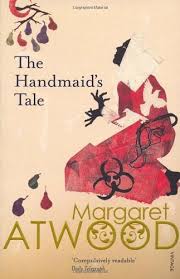Wednesday, 30 April 2014
The Handmaid's Tale
The Handmaid's Tale
Margaret Atwood
London, Vintage, 1985, 324p
This is one of those books I have been meaning to read for a long time - the kind of book my non-librarian friends condemn me for not having read. But at last, I can stop feeling guilty - instead, I now feel haunted by one of the darkest novels I have ever read.
In the Republic of Gilead, the roles of all are clearly defined by a strict social structure. Commanders and their wives occupy places of power, served by Marthas and Handmaids. Any rebels are swiftly removed from society, the punishment typically being death. Offred is a Handmaid, and her role is to enable procreation - she's are subject to harsh rules about sexuality and sensuality, dressed always in long dark robes.
But a repressive state does not prevent Offred of dreaming of her past and hoping for the future. She had a child, once, and a husband, and longs to be reunited with them; but fear is a powerful deterrent.
Margaret Atwood defines her writing as speculative fiction, as, unlike science fiction, the world she creates could really happen. As Offred describes, the transition from the contemporary society in which her reader lives into the Republic was slow and smooth, beginning with identity cards and scienfitic developments in relation to DNA. As such, the world Atwood has created is plausible, it could become our reality in the future.
The Handmaid's Tale is a sharp, perceptive novel about structures of power in modern America. Atwood explores issues of sexuality and desire, highlighting the impossibility of a 'moral' state, in part due to the complexity of defining what is moral. Her prose is incredibly witty and readable, drawing you into Offred's world and haunting you with the possibility of this dark, repressive future - and slowly revealing how it came to be.
Labels:
adult fiction,
American dream,
death,
drama,
dystopia,
feminism,
morality,
motherhood,
politics,
sexuality,
slavery,
women
Subscribe to:
Post Comments (Atom)

No comments:
Post a Comment